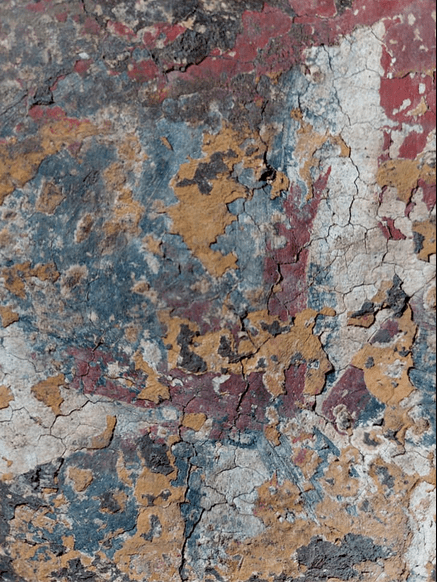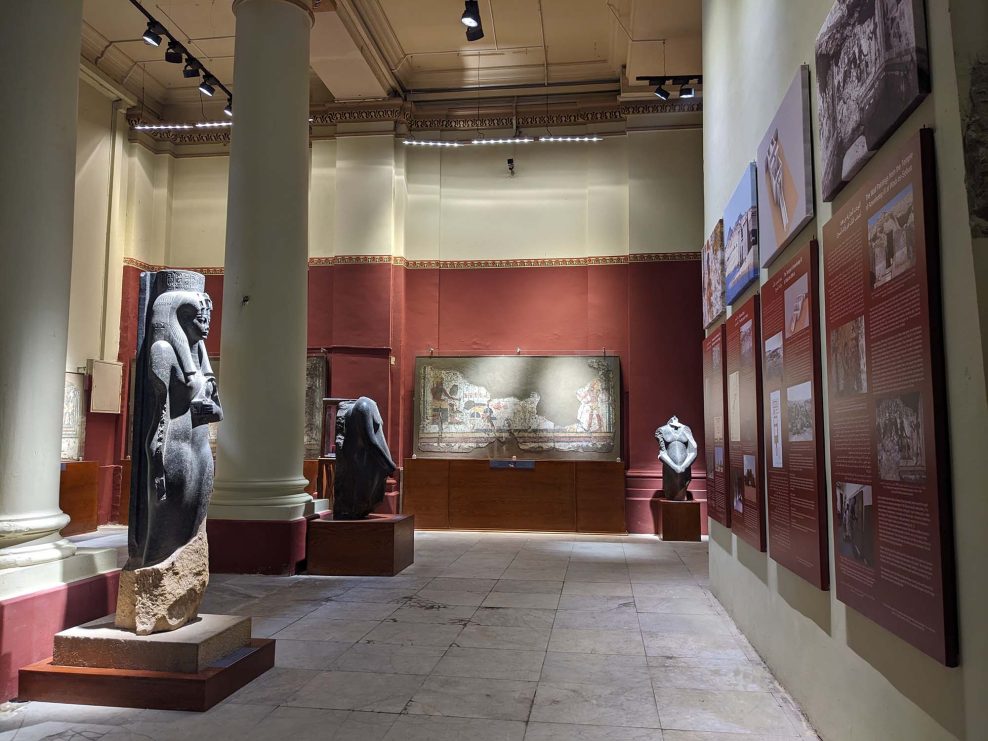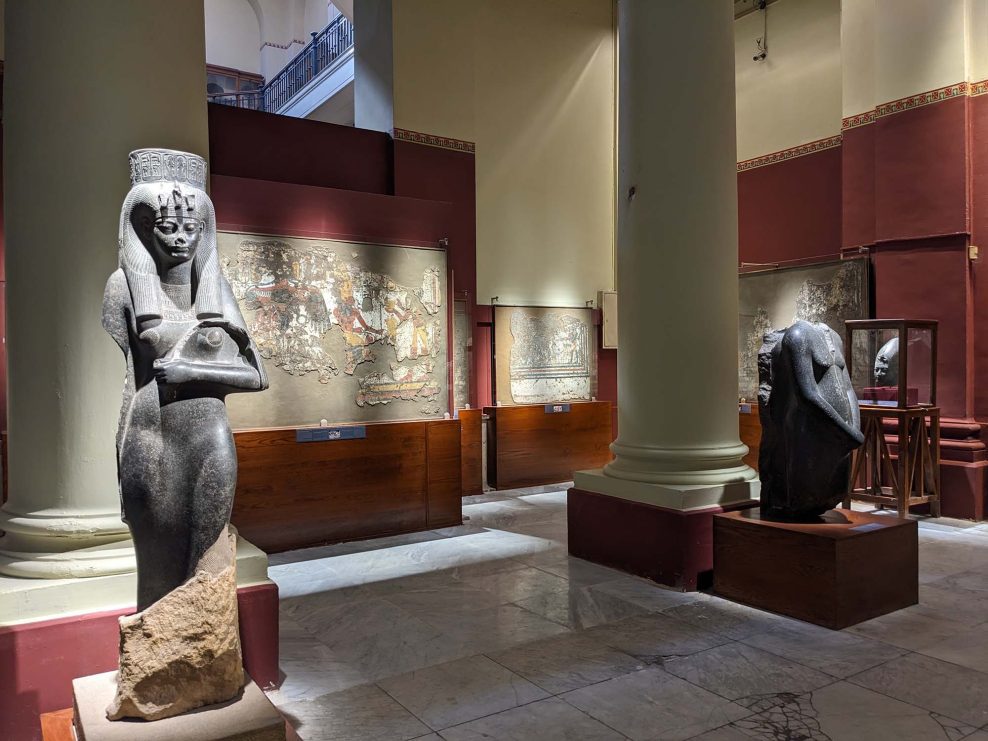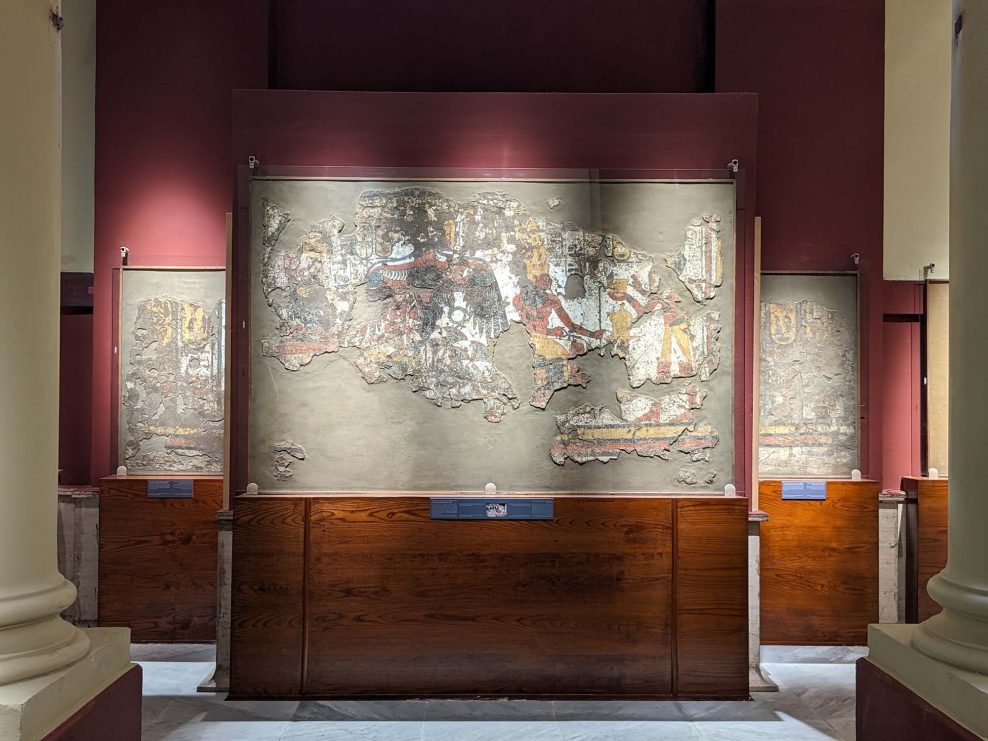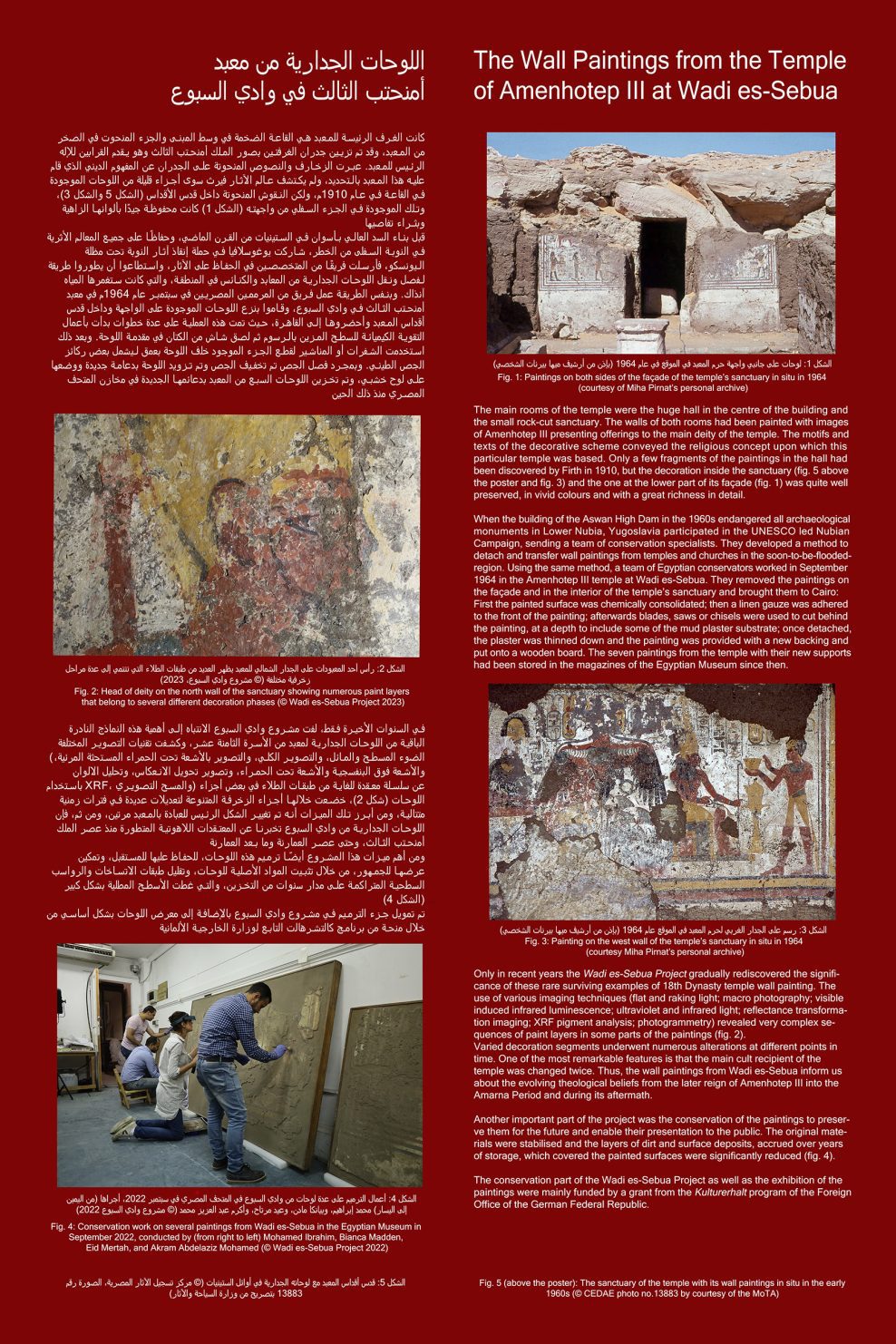Projects
Conservation & Research: Wadi es Sebua Temple Wall Paintings
Conservation and redisplay of a series of historically detached wall painting panels at the Egyptian Museum Cairo.
This was a multidisciplinary project under the leadership of Prof Martina Ullmann of the Ludwig Maximilians University Munich, undertaken at the Egyptian Museum Cairo, on the wall paintings from the Temple of Amenhotep III at Wadi es Sebua. The wall paintings were historically detached and transferred from the temple in 1964, as a part of the UNESCO rescue operation at the time of the creation of the Aswan High Dam.
These unique and highly significant multi-layered paintings, survived as seven panels, which were in storage in the basement of the Egyptian Museum since their detachment and transfer. The overall aim of this research and conservation project was to enable their display within the museum.
The project involved art historical and iconographical study and research, materials analysis, including XRF to characterize pigments, and complimentary non-invasive analytical and recording techniques including photogrammetry, Reflectance Transformation Imaging, Dstretch, Visible Induced Infrared Luminescence, macro and super-macro photography.
The conservation project, informed by the above techniques, combined with archival research (notably into the work of the conservators in the 1960s and the excavation of the temple at that time), aimed to understand: the original materials and techniques of construction; the deterioration factors; the impacts of later interventions and the materials used; the current conditions, and, using this information, define the conservation treatment plan and materials selection.
Working with conservators from the Egyptian Museum Cairo, I undertook the examination and condition assessment, formulated the treatment plan and led the practical conservation work. While the backing system used in the 1960s transfer appeared, on conservation assessment, to be structurally stable and to still offer good support, the original paintings required conservation treatment to stabilise them and enable display. This work involved: relaying and securing the lifting and flaking paint layers – most critically the highly significant palimpsest layers which showed historical alteration of the iconography; the stabilisation of the original mud plaster substrate; and the reduction of the layers of dirt and surface deposits, accrued over years of storage in the museum basement, which covered the painted surfaces.
The panels are now on permanent display at the Egyptian Museum, Cairo. The exhibition, which includes information on the conservation work, was opened on 11 September 2023.
Images are courtesy of Martina Ullman, Wadi es Sebua project, and Kathryn Piquette Wadi es Sebua project.
